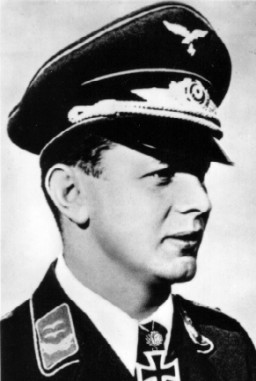
Josef "Pips" Priller was a German military aviator and wing commander in the Luftwaffe during World War II. As a fighter ace, he was credited with 101 enemy aircraft shot down in 307 combat missions. All of his victories were claimed over the Western Front, including 11 four-engine bombers and at least 68 Supermarine Spitfire fighters.

Jagdgeschwader 54 was a Luftwaffe fighter wing that was founded in late 1936 and operated from 1939, the entire length of the Second World War. It later existed under the reformed Luftwaffe from 1947 to 1991 as BG54/B54 A B and C. Originally, JG 54 flew most of its missions on the Eastern Front where it claimed more than 9,600 aircraft shot down. It was the second-highest scoring wing in the Luftwaffe after JG 52. Notable pilot aces (Experten) that flew with JG 54 included Walter Nowotny, Walter Boerner,Otto Kittel, Hans-Ekkehard Bob, Max-Hellmuth Ostermann, Hugo Broch and Hannes Trautloft.
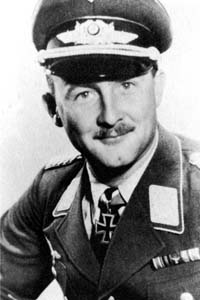
Wolfgang Schellmann was a German Luftwaffe military aviator during the Spanish Civil War and World War II. As a fighter ace, he is credited with 25 enemy aircraft shot down, including 12 in Spain, 12 on the Western Front and one on the Eastern Front of World War II.
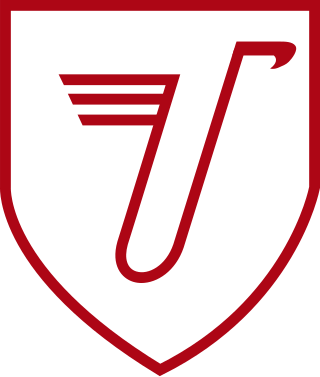
Jagdgeschwader 3 "Udet" was a Luftwaffe fighter wing of World War II. The Geschwader operated on all the German fronts in the European Theatre of World War II. It was named after Ernst Udet, an important figure in the development of the Luftwaffe, in 1942.

Jagdgeschwader 53 was a Luftwaffe fighter-wing of World War II. It operated in Western Europe and in the Mediterranean. Jagdgeschwader 53 - or as it was better known, the "Pik As" (Ace of Spades) Geschwader - was one of the oldest German fighter units of World War II with its origins going back to 1937. JG 53 flew the various models of the Messerschmitt Bf 109 throughout World War II.

Walther Dahl was a German pilot and a fighter ace during World War II. He was a recipient of the Knight's Cross of the Iron Cross with Oak Leaves of Nazi Germany. Dahl claimed some 128 enemy aircraft shot down in 678 missions.

Kurt "Kuddel" Ubben was a German Luftwaffe wing commander and military aviator during World War II, a fighter ace listed with 110 aerial victories—that is, 111 aerial combat encounters resulting in the destruction of the enemy aircraft—claimed in approximately 500 combat missions.

Siegfried Freytag was a World War II German Luftwaffe pilot and wing commander. As a fighter ace, he was credited with 102 aerial victories of which 49 victories were claimed over the Eastern Front. Among his victories over the Western Front are at least 2 four-engine bombers. He was a recipient of the Knight's Cross of the Iron Cross Freytag had been nominated for the Knight's Cross of the Iron Cross with Oak Leaves, but the war ended before the paperwork had been processed.

Horst-Günther von Fassong was a German Luftwaffe military aviator and fighter ace during World War II. Depending on source, he is credited between 63 and 136 aerial victories achieved in an unknown number of combat missions. This figure includes up to 90 aerial victories on the Eastern Front, and potentially further 46 victories over the Western Allies, including up to four four-engined bombers.
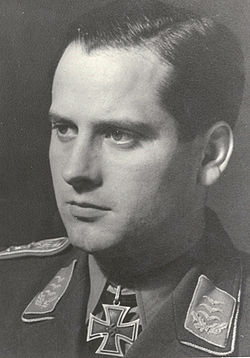
Gerhard Schöpfel was a German Luftwaffe military aviator and wing commander during World War II. As a fighter ace, he is credited with 45 aerial victories claimed in approximately 700 combat missions, all of which on the Western Front.
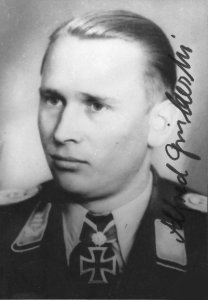
Alfred Grislawski was a German Luftwaffe military aviator during World War II, a fighter ace credited with 133 victories claimed in over 800 combat missions. The majority of his victories were claimed over the Eastern Front, with 24 claims over the Western Front. Of his 24 victories over the Western Allies, 18 were four-engined bombers.

Jagdgeschwader 6 Horst Wessel was a Luftwaffe fighter wing during World War II. Created late in the war as one of the last Jagdgeschwader, JG 6 fought on the Western and Eastern Fronts and in the Defence of the Reich over Germany. This period of the air war was characterised by few successes and heavy losses among the German fighter arm.

Jagdgeschwader 11 was a fighter wing of the German Luftwaffe during World War II. Its primary role was the defense of Northern Germany against Allied day bomber raids. Formed in April 1943 as a split from Jagdgeschwader 1, the unit primarily used the Messerschmitt Bf 109 and Focke-Wulf Fw 190.

Reinhard Seiler was a Spanish Civil War and World War II Luftwaffe Major and ace, commander of Jagdgeschwader 104 and a winner of the Knight's Cross of the Iron Cross with Oak Leaves of Nazi Germany; for the fighter pilots, it was a quantifiable measure of skill and combat success. Reinhard Seiler was credited with 100 victories during World War II, over the course of about 500 combat missions. He recorded an additional 9 victories during the Spanish Civil War.

Jagdgeschwader 101 was a Luftwaffe fighter-training-wing of World War II.

Jagdgeschwader 4 was a Luftwaffe fighter wing of World War II.

Jagdgeschwader 300 was a Luftwaffe fighter-wing of World War II. JG 300 was formed on June 26, 1943 in Deelen as Stab/Versuchskommando Herrmann, from July 18, 1943 as Stab/JG Herrmann and finally renamed on August 20, 1943 to Stab/JG 300. Its first Geschwaderkommodore was Oberstleutnant Hajo Herrmann.
Gerhard Michalski was a German Luftwaffe military aviator and wing commander during World War II. As a fighter ace, he is credited with 73 aerial victories in 652 missions, of which 59 victories were achieved over the Western Front including 13 four-engine bombers, and 14 over the Eastern Front. He was awarded the Knight's Cross of the Iron Cross with Oak Leaves, the highest award in the military and paramilitary forces of Nazi Germany during World War II.

Jagdgeschwader 301 was a Luftwaffe fighter-wing of World War II. The order to form JG 301 was issued on 26 September 1943 and formed on 1 October 1943 in Neubiberg with Stab and three Gruppen (groups) as a "Wilde Sau" single-seat night fighter unit.
Jagdgeschwader 76 was a Luftwaffe fighter-wing of World War II. JG 76 was first formed in 1939 in Wien-Aspern with only I. Gruppe. The Geschwader was renamed II./Jagdgeschwader 54 on 4 July 1940.
















